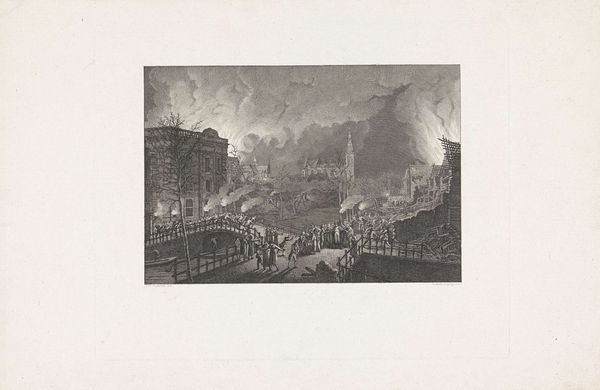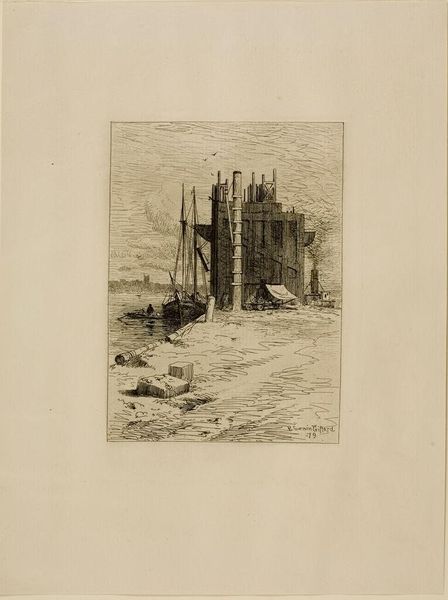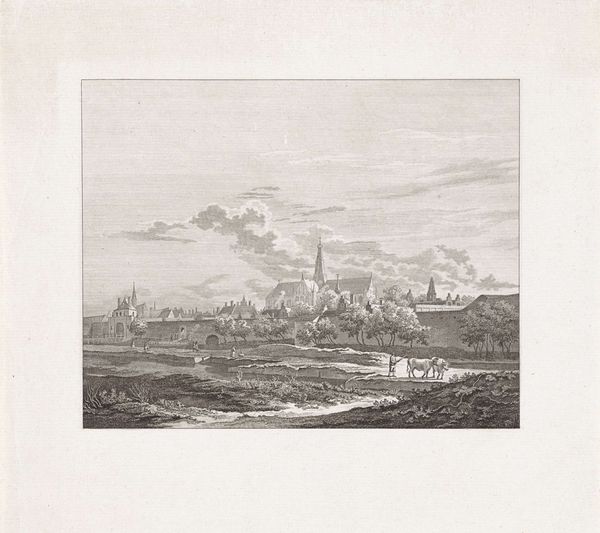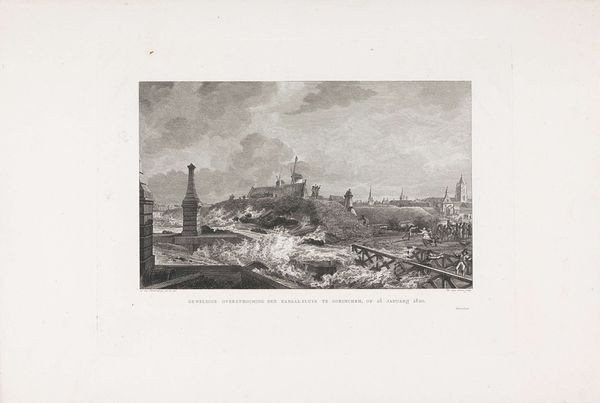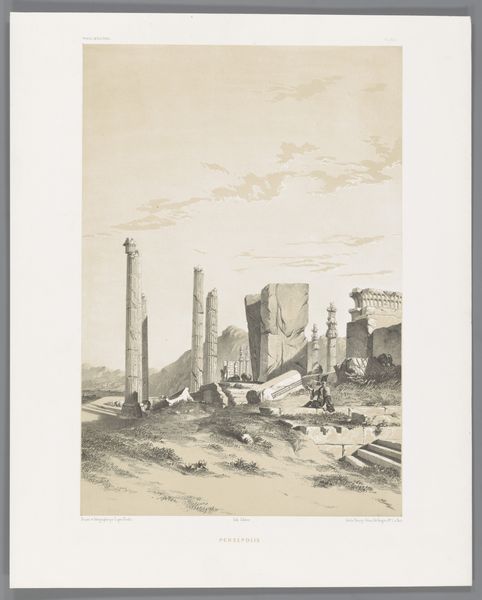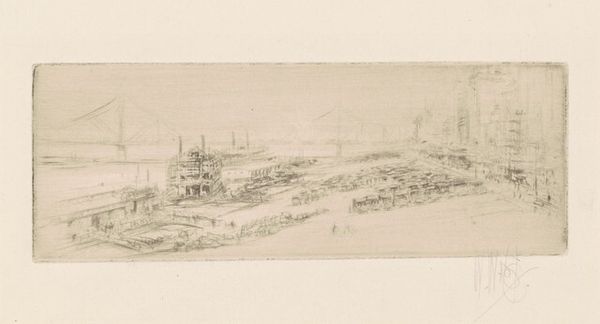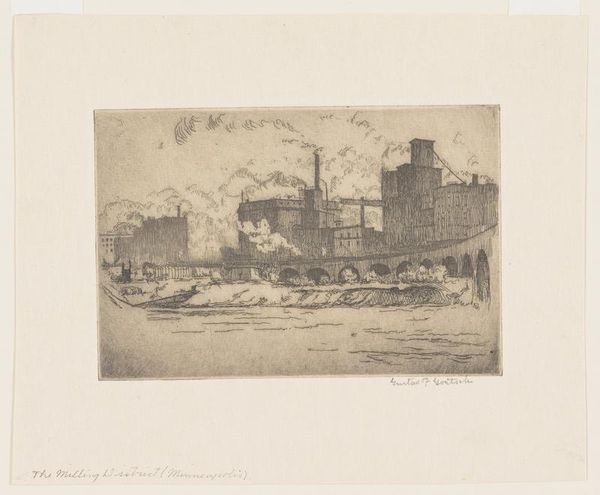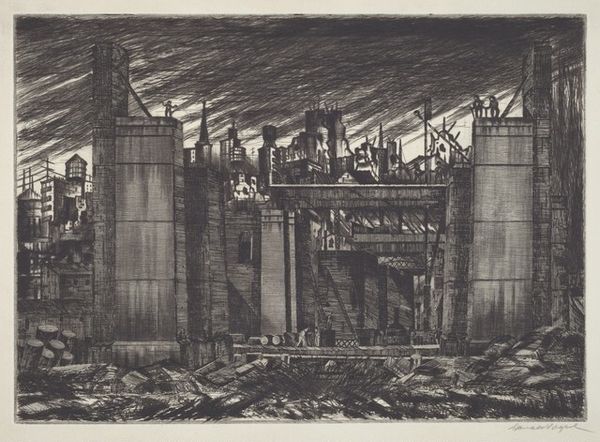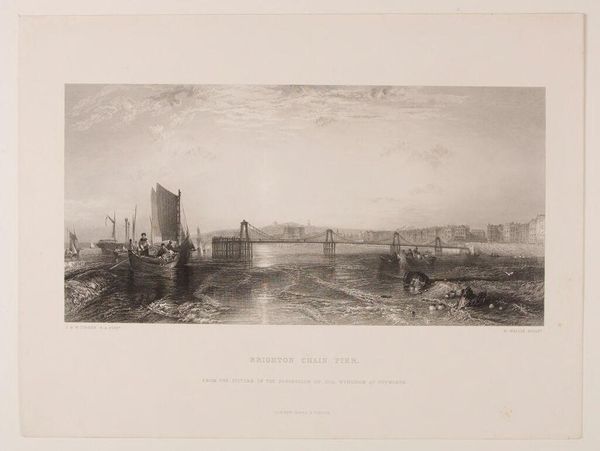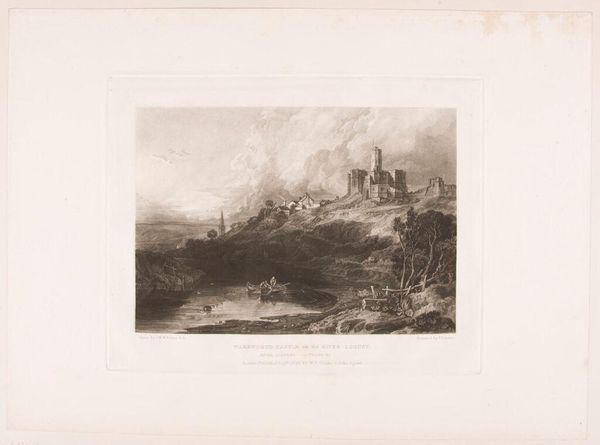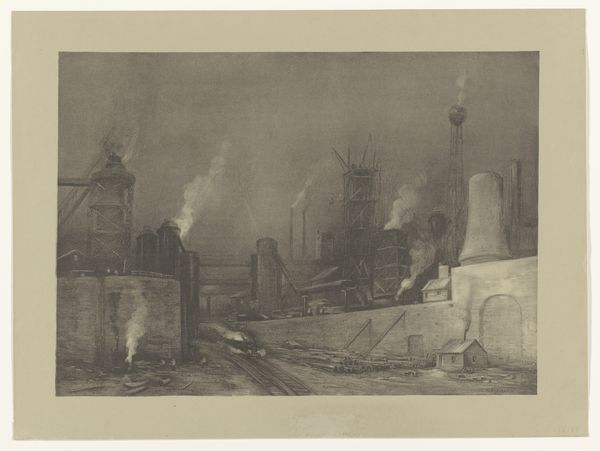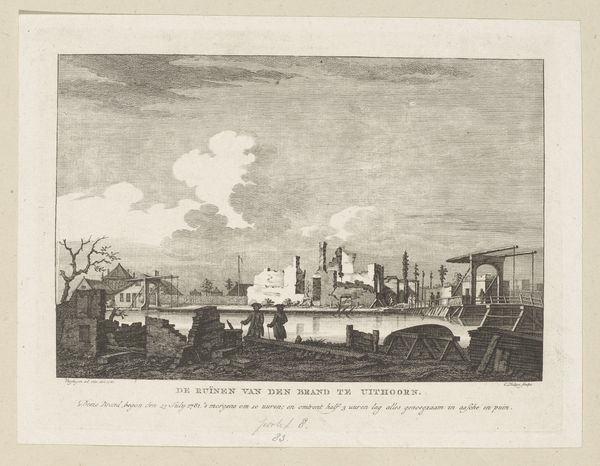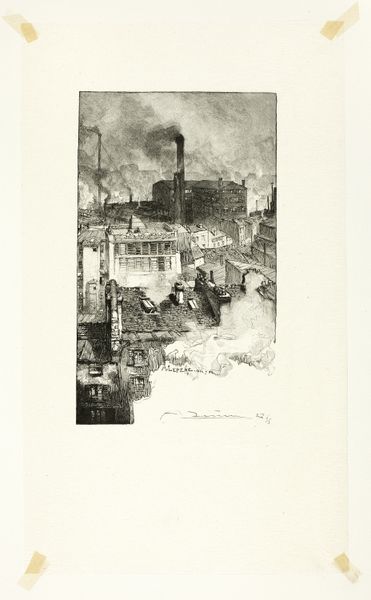
Ruine van de Stoom Suiker-raffinaderij en andere gebouwen te Rotterdam, op 13en Mei 1849, genomen voor de opgang der brug aan de overkant op de Leuvehaven 1849
0:00
0:00
lithograph, print
#
pencil drawn
#
lithograph
# print
#
pencil sketch
#
romanticism
#
line
#
cityscape
#
pencil work
#
history-painting
#
realism
Dimensions: height 378 mm, width 571 mm
Copyright: Rijks Museum: Open Domain
This lithograph, made by the Koninklijke Nederlandse Steendrukkerij van C.W. Mieling in 1849, captures the ruins of Rotterdam's steam sugar refinery. Lithography, a printmaking technique using a stone or metal plate with a smooth surface, allows for detailed depictions like this one. The method is significant. Lithography was a relatively new technology in the 19th century, enabling the mass production of images. Its application here, to document the ruins of a sugar refinery, connects industrial progress with its potential consequences. Notice how the smoke billowing from the skeletal remains of the factory dominates the scene, almost obscuring the sky. The stark contrast between the detailed rendering of the ruined architecture and the hazy background emphasizes the destructive force of the fire. The print serves as a historical record but also hints at the human cost of industrialization, the labor involved in sugar production, and the environmental impact of industrial accidents. It challenges us to consider the relationship between progress and destruction, captured through the mechanical reproduction of this print.
Comments
No comments
Be the first to comment and join the conversation on the ultimate creative platform.
